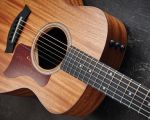How Do All Musical Instruments Make a Sound?
Music is a universal language that speaks to the soul, and the instruments we use to create it have been around for centuries, each with its unique way of producing sound. Have you ever wondered how different instruments make their sounds? Whether you're a musician, a music lover, or just curious, understanding how musical instruments create sound is fascinating. Let's dive into how various musical instruments—from string to wind to percussion—make their distinctive sounds, each governed by the laws of physics and vibration.
1. String Instruments: Vibrating Strings
String instruments, like the violin, guitar, and cello, produce sound when their strings vibrate. These instruments use the principle of vibration to generate sound waves. When a string is plucked, strummed, or bowed, the motion causes the string to vibrate at a certain frequency, which produces sound. The length, tension, and thickness of the string determine the pitch—longer, looser strings create lower notes, while shorter, tighter strings create higher ones.
One fascinating thing about string instruments is how the body of the instrument resonates with the vibrating strings. For example, in a violin, the hollow wooden body amplifies the sound produced by the string. The sound travels from the vibrating strings to the bridge, and from there, it is transmitted to the body of the violin, which further resonates and amplifies the sound.
2. Wind Instruments: The Power of Air
Wind instruments, such as flutes, trumpets, and saxophones, rely on air movement to produce sound. The air creates vibrations in the instrument’s body, and these vibrations are shaped by the player’s control. In woodwind instruments like the flute and clarinet, the player blows air across a mouthpiece or reed. The reed vibrates and produces a sound that travels through the instrument’s tube, changing pitch depending on how the player manipulates the keys or holes.
In brass instruments like trumpets and trombones, the player uses their lips to create vibrations in the mouthpiece. This is why brass players are often told to "buzz" their lips into the mouthpiece to get the sound going. As the player adjusts the tension of their lips and controls the airflow, the pitch varies, allowing for a wide range of musical expression.
3. Percussion Instruments: Hitting, Shaking, or Rubbing
Percussion instruments produce sound by being struck, shaken, or rubbed. These instruments include drums, tambourines, cymbals, and maracas. When a percussion instrument is struck, the force of the impact causes the instrument to vibrate. The vibration then creates sound waves that we hear as music. The pitch of a percussion instrument depends on the size, shape, and material of the object being hit.
For example, the deeper and larger the drum, the lower the pitch it produces. Snare drums, with their tighter, smaller frames, produce sharper, higher-pitched sounds, while bass drums produce deep, booming notes. Cymbals, with their thin, flexible metal, vibrate rapidly when struck, creating a crash of sound. The same principle applies to instruments like maracas, where shaking them causes the beads inside to rattle against the walls, producing a rhythm that complements the music.
4. Electronic Instruments: Manipulating Sound Waves
In the modern world, electronic instruments like synthesizers, electric guitars, and drum machines have become staples in music. These instruments work by generating and manipulating electronic signals to create sound. A synthesizer, for example, uses oscillators to create sound waves, which are then modified using filters, effects, and modulation to create different tones and textures. Electric guitars, on the other hand, use magnetic pickups to convert the vibration of the strings into electrical signals, which are then amplified and shaped to produce the desired sound.
Unlike traditional instruments, electronic instruments often rely on technology and can generate a vast array of sounds that go beyond what’s possible with purely acoustic instruments. This has revolutionized the music industry, giving artists the ability to experiment with entirely new soundscapes.
5. The Role of the Human Voice
Perhaps the most personal and universal of all instruments is the human voice. Our vocal cords vibrate when air from the lungs is pushed through them, creating sound. The pitch, volume, and tone are all controlled by the muscles in the vocal cords, the shape of the vocal tract, and the manipulation of airflow. This allows for an incredible range of sound, from the highest soprano to the deepest bass.
Just like with other instruments, vocalists can control the sound they produce through technique and breath control. The unique sound of each voice is influenced by factors like anatomy, health, and training, making each human voice a one-of-a-kind instrument.
6. Conclusion: The Science Behind Musical Instruments
From the vibrating strings of a guitar to the breath-controlled notes of a saxophone, musical instruments rely on the same basic principle: vibration. Whether through air, strings, or a percussion impact, all instruments produce sound by making the air around us vibrate at certain frequencies. Understanding how different instruments create sound adds a deeper appreciation for the music we hear and perform. Next time you listen to a symphony or a band, think about the fascinating science behind every note and how each instrument contributes to the musical magic.
7. Exploring More Musical Instruments
If you’re curious about learning more or experimenting with various instruments, there are plenty of resources and tools available to deepen your understanding. As someone who enjoys exploring the world of sound, I highly recommend checking out the wide range of musical instruments and getting hands-on experience. Whether you’re playing in a band, exploring new music on your own, or simply enjoying a concert, the world of music is rich with possibilities. And for those seeking new instruments to try, websites like Beat Trigger provide all the information you need to start your musical journey.








